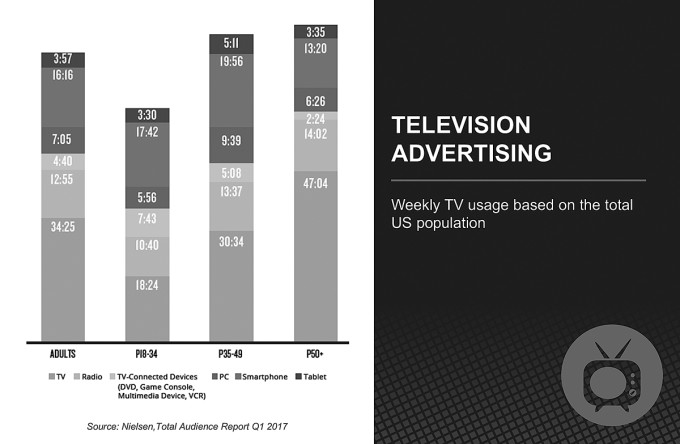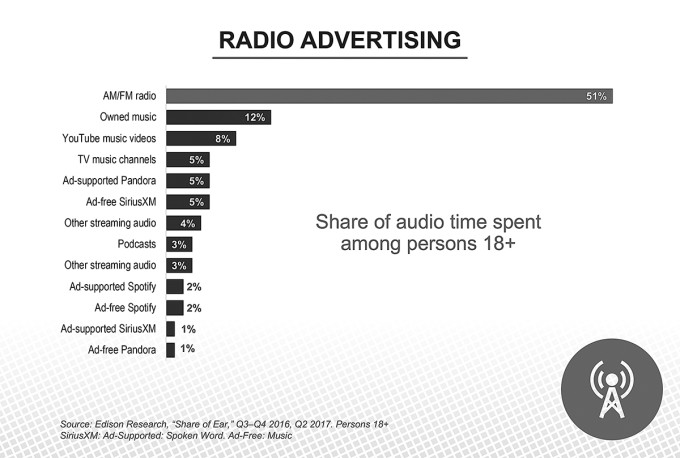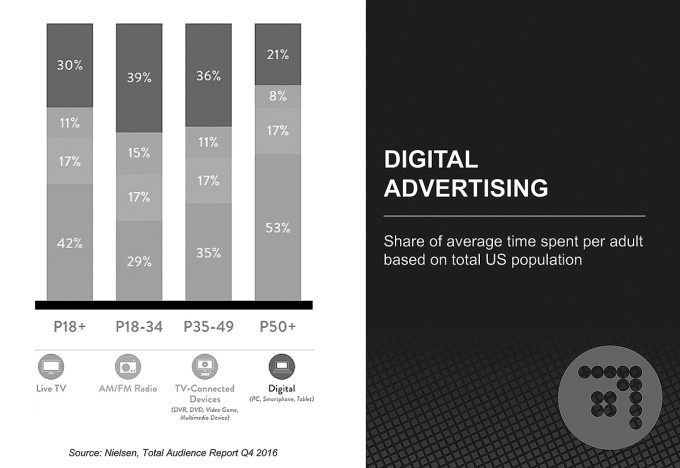Abstract:
Media marketing plays a significant role in two key areas of medical practice management: volume growth and patient retention. However, because the average consumer is exposed to about 30,000 messages daily, it can be difficult to cut through the clutter. One strategy is to understand and deploy a variety of types of media—including paid, earned, owned, and shared—in combination to drive the desired results.
Media marketing plays a significant role in two key areas of medical practice management: volume growth and patient retention. However, because the average consumer is exposed to about 30,000 messages daily, it can be difficult to cut through the clutter. One strategy is to understand and deploy a variety of types of media—including paid, earned, owned, and shared—in combination to obtain the desired results.
Consider the sales funnel shown in Figure 1. Paid media draws prospective patients into the funnel by creating first awareness of the practice, and then interest in it. Earned media adds to the interest and increases the practice’s credibility. So, when patients are ready to make a decision, they are familiar with the practice. Owned media provides them with more information, drawing them deeper into the funnel, where shared media and digital advertising inspire them to act—hopefully by scheduling an appointment.

Figure 1. Combining a variety of media types in combination drives results.
Paid Media
Paid media is advertising—paying to promote a practice’s services or products. On the plus side, advertising offers immediacy, scale, and control. If not done well, however, it may simply add to the clutter, costing practices money without much reward.
A common error in advertising is to default to a “spray and pray” approach, spending a lot of money on placement in a variety of media, but without a focused message and targeted buy. Most practices have limited advertising budgets, so the impact of each dollar should be considered carefully.
The three essential components of effective paid advertising are reach, frequency, and message.
Reach tells us the number of people in the target demographic that we are sharing the message with—basically, who we reach. It is just as important to refine the target audience as it is to refine the message. For example, a women’s health practice will not want to spend advertising dollars on a medium that attracts a young male audience.
Frequency tells us how often the target audience will be exposed to the ad. The “rule of seven” is an old marketing adage that says a prospect needs to see or hear a marketing message at least seven times before he or she takes action (and with the media saturation that exists today, that number is likely much higher now). Advertisers become tired of a campaign long before their customers do, as it only gets through to the customers a limited number of times and amidst a lot of competing messages. Resist the urge to constantly change your branding and messaging. Patience pays off.
Message is what is being said and how it is being said. Take a minute and try to think of a slogan of a well-known brand. Perhaps Nike’s “Just do it” came to mind. Or maybe the line made famous by MilkPEP (Milk Processor Education Program) in its national campaign: “Got milk?” What do these messages have in common? They’re short, catchy, and, above all else, concise. Trying to communicate too many messages doesn’t do anything but confuse an audience. Consumers have a short attention span, so it is often better to deliver one, focused message rather than a handful they will gloss over.
Ideally, syndicated media measurements, like Nielsen TV and Nielsen Audio, should be used to determine reach and frequency. All too often, advertisers want to buy the media they watch or listen to the most, even when they aren’t in their own target audience. Data and syndicated media measurement allows us to home in on the primary demographic without personal bias, which gives the practice the biggest bang for their advertising buck.
There are a wide variety of paid media platforms to consider. Here are the most common, each of which offers its own set of benefits:
Television: Television advertising continues to be the top form of media—offering sight, sound, motion, and emotion—with adults overall spending almost 35 hours per week tuned in (Figure 2). It is also relatively easy to target key demographics using syndicated media measurements.

Figure 2. Weekly TV usage based on the entire U.S. population. (Source: Nielsen, Total Audience Report Q1, 2017.)
Radio: Terrestrial AM/FM radio remains the centerpiece of audio advertising, accounting for 51% of audio time spent among persons aged 18 and over (Figure 3). This compares with only 6% for Pandora, 5% for Sirius, and 4% for Spotify.(1) It is also relatively easy to target key demographics, because listeners tend to be loyal to radio stations.

Figure 3. Audio time among persons aged 18 and older. (Edison Research. Share of ear. Q3-Q4 2016, Q2 2017. Persons 18+. Sirius FM: Ad-Supported: Spoken Word, Ad-Free: Music.)
Print: Although the death of print media is proclaimed often, it remains the most trusted form of paid media, and does best with an older demographic, often a key target audience for medical practices.
Digital: Online advertising using Google Adwords, Facebook, or other platforms allows exceptional targeting and tracking capabilities. Although television still reigns overall, Figure 4 shows that digital is gaining traction, exceeding television for the age 18–34 demographic.

Figure 4. Digital advertising share of average time spent per adult based on U.S. population. (Source: Nielsen, Total Audience Report Q4, 2016.)
Billboards: Billboards offer high visibility and frequency for commuters who pass by every day. They work best in conjunction with other forms of advertising.
When determining the best paid media platforms to promote a medical practice, it is important to be aligned with the practice’s primary audience. Avoid throwing money at new opportunities because they are shiny and new, and instead go with what is tried and true.
Earned Media
Earned media is public relations. Through press releases, media alerts, and relationships with the media, it is possible to gain exposure in news segments, feature stories, and bylined articles. This can help to position the practice’s experts as thought leaders in their field, and thus build awareness of and credibility for the practice.
Most medical practices will want to work with an agency on earned media, because it has a lexicon and style all its own, and it takes time to nurture relationships with members of the media. Unlike advertising, there is no cost for the coverage—just time and effort. Done well, the result is a third party promoting the practice, enhancing its credibility, and providing the practice with shareable content for use on its website to enhance search engine optimization.
Earned media can be a challenge because there is little control of the message and no guarantee the media will pick up the story. The key to pitching to the media effectively is to aim for the sweet spot—the intersection between what’s in it for the practice and what’s in it for the media’s audience. Successful earned media benefits both sides.
It also is imperative to be available when a writer, editor, or other news person responds, even if the time does not align perfectly with the practice’s busy schedule. Members of the media often are working on tight deadlines, and if they don’t receive a quick response, they will reach out to someone else to provide commentary—which could be a competitor or someone providing a contrary point of view.
Once reporters, editors, and producers have an expert as a contact, they are more likely to call back for other stories. Repeat appearances and regular guest columns often are the result of successful media outreach, which catapults awareness of the practice.
For medical practices, occasions for press releases and media outreach may include any of the following:
A new procedure, service or technology, particularly if it is new to the local market;
New staff hires, especially if they expand the capabilities of the practice;
Events, clinics, screenings, and promotional activities;
Accreditations and awards;
News with a seasonal tie-in, like flu season, spring allergies, or national recognitions such as Heart Month in February;
Topical news, providing a local perspective on national or regional health news;
Corporate social responsibility—if, for example, the practice staff donates time, support, or funds to a worthy cause; and
Success stories featuring patients who are willing to be featured.
Although it is difficult to measure the effectiveness of many public relations activities, the credibility provided by earned media can prove invaluable in overall strategy and long-term planning.
Owned Media
Most medical practices already own some media, including their website, brochures, mailers, and blogs. These are assets the practice manager controls that can be used to help build long-term relationships with existing and potential patients. They offer longevity and the ability to reach niche audiences. However, they can be difficult to disseminate without the benefit of a plan that incorporates other forms of media used in combination to maximize their effectiveness.
Owned media is valuable in that the practice controls the content: messaging, tone, and appearance. We encourage practice managers to take stock of all of the owned media they are currently using, and evaluate each piece asking the following questions:
Do the materials portray the practice’s brand in a positive and professional manner?
Are the materials consistent in tone, style, and branding?
Are the materials accurate and helpful to potential or current patients?
The practice’s website should be considered the “front door” of the practice, because it is often the first place a patient interacts with the practice, and first impressions count.
One of the most valuable pieces of owned media is a practice’s website, so it is worth investing the time and resources to ensure that it is done well and maintained regularly. It should be considered the “front door” of the practice, because it is often the first place a patient interacts with the practice, and first impressions count. Every practice’s website should:
Offer simple, easy-to-use navigation;
Contain the basic information patients are looking for: provider biographies, location, phone number, hours of operation, how to schedule an appointment, services offered, and so on;
Be mobile-optimized for users on phones and tablets;
Provide answers to frequently asked questions; and
Make it easy to take the next step, whether that is scheduling an appointment or asking for more information.
Beyond these basics, practices will want to maximize search engine optimization by ensuring the site is updated regularly with fresh content, such as a blog, news, or other features.
Shared Media
Shared media, also referred to as social media, can provide a personal approach to promoting a medical practice. It allows practices to develop relationships with their patients by becoming a trusted resource, which can help grow loyalty and provide easily trackable analytics. It also offers a great, no-cost way to share paid, earned, and owned media.
However, without a clear understanding of the many social media platforms—Facebook, Twitter, LinkedIn, Instagram, YouTube, and more—it can be easy to miss the mark. Each platform continues to evolve, and a practice’s social media plan needs to keep pace.
It is important to understand that the platforms are not the same, so the way to communicate on them must be different as well. Furthermore, not all platforms are relevant to a specific medical practice’s audience, or appropriate for the types of information a medical practice would share.
Social media can also be a huge time-suck for a medical practice, because it is important to maintain a consistent presence, monitor it daily, and respond to comments and posts—both positive and negative—promptly.
If a practice has the time and expertise to be effective on social media (or an agency that can help), Facebook usually is the most appropriate platform to consider. Of course, patient privacy and HIPAA are important concerns for practices, so a social media policy that prohibits the sharing of protected patient information is essential.
Conclusion
The best marketing strategies encompass all things media, because each can effectively reinforce and bolster the others. Strategically placing paid media in concert with earned news coverage and sharing it through owned and social media channels is an art all its own. By deploying a strategy that encompasses all things media, practice managers will enjoy more opportunities to grow their practices.
References
Edison Research. Share of the Ear, Q3-4 2016, Q 2 2017. Persons 18+ Sirius XM: Ad Supported: Spoken Word. Ad-Free: Music. edisonresearch.com .
Topics
Differentiation
Environmental Influences
Technology Integration
Related
Managing a Productive Prima DonnaFrom Frustration to Satisfaction: Enhancing Phone Skills in Your Medical OfficeHow to Keep Your Team’s Spirits Up in Anxious Times




